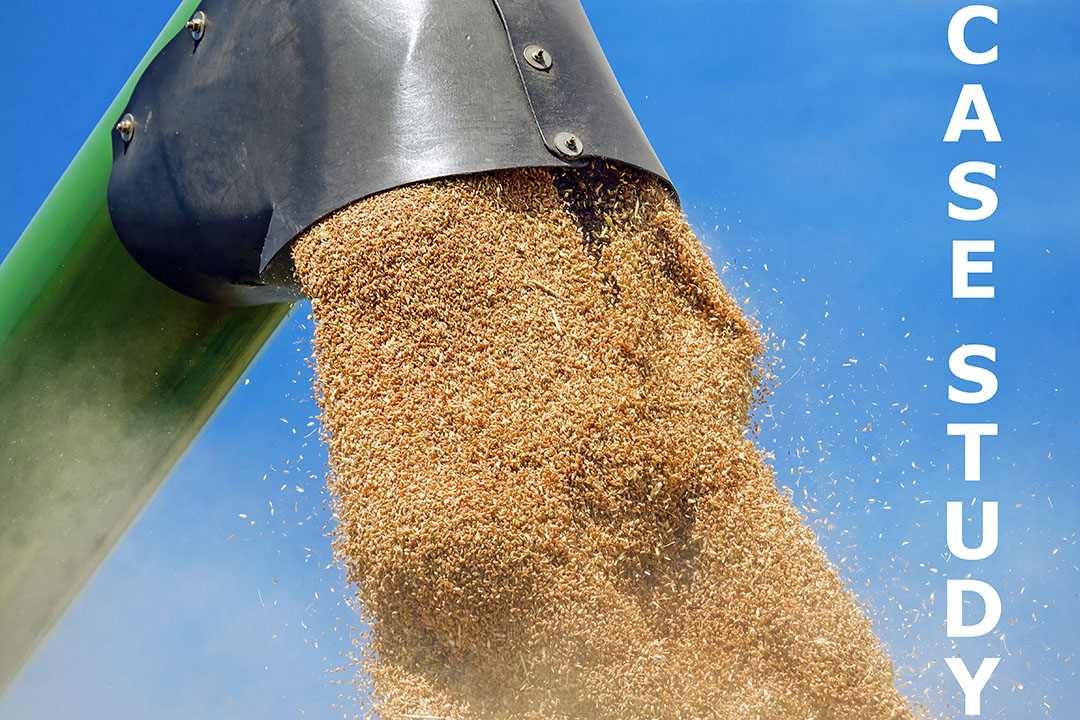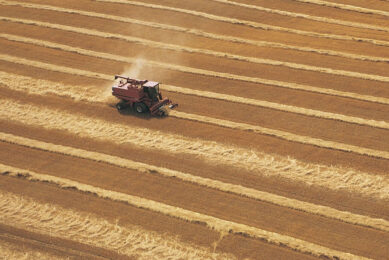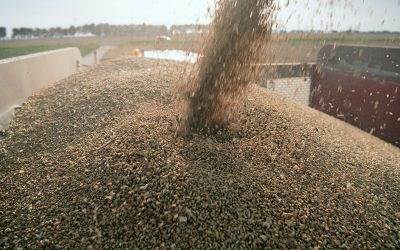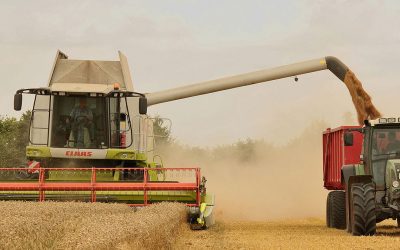Case study: EU28 feed crop update

The total MY2019/20 EU28 grain crop is about 2 MMT higher than the previous forecast, at almost 313.5 MMT. Higher wheat, corn and barley production is partially offset by a lower mixed grain production.
Higher than previously forecast food, seed and industrial use is largely offset by a reduction in forecast feed use, but it is still significantly up year-on-year. The overall situation means a relatively buoyant outlook for EU28 grain supplies, planting conditions are mixed.
Latest country-specific updates for MY2019/20:
Baltic countries
A record grain harvest was achieved in Estonia. Wheat production increased by 80% in comparison with the record low of the previous harvest. Near record levels were also reached in Latvia and Lithuania with soft wheat output, although grain quality and output were regionally diverse. Soft wheat export potential from the Baltics to non-EU countries will increase significantly.
Bulgaria
Good conditions through the spring and adequate rainfall meant that Bulgaria harvested a larger than expected wheat crop. Corn production also expanded due to a larger area planted and harvested, but the average corn yields fell below the earlier forecast due to dry and hot weather in the second half of July and August. Due to reduced swine inventories as a result of the African Swine Fever outbreak, feed use is likely to decrease and result in more grain available for export. As of mid-November, wheat exports are significantly up year-on-year due to favourable demand in the Black Sea region.
Czech Republic and Slovakia
The Czech Republic and Slovakia have seen better than expected wheat and barley crops, but the opposite for corn due to the summer drought and increased rodent damage.
France
Despite the heatwave that hit France in mid-2019, both the barley and soft wheat crops achieved almost record yields with excellent quality due to good conditions throughout the growing season. However, the corn was affected by the drought that lasted until late September, which lowered both acreage (through a transfer from corn grain to corn sileage) and yield. Heavy rains then hampered the corn harvest, especially in the northern half of France where, as of mid-November, a sizeable part of the crop (about 20%) is still unharvested. Higher volumes of wheat were exported to West and North Africa (notably Morocco), Egypt and China, benefiting from a lower euro and good price competitiveness.
Germany
High temperatures and windy weather in late June caused grain yields to suffer, resulting in early maturation. As a result, production was lower than previously forecast, especially for wheat.

Italy
The rice harvest commenced at the end of September. Some delays were incurred by a period of wet weather at the end of October and beginning of November but it is now nearing completion and the outlook is positive.
Netherlands
MY2018/2019 saw a record volume of corn imported by the Netherlands, and corn imports are forecast to remain high in MY2019/20 based on an abundance of corn in Brazil and Ukraine. Imports from EU member states are forecast to remain steady due to the good EU harvest. Overall the feed uptake of corn will increase at the expense of wheat.
Nordics
In the Nordics, wheat and barley crops significantly increased, mainly a recovery from the low crops in MY2018/19. As a result, feed use of wheat and barley is forecast to increase.
Spain
The area planted to corn in MY2018/19 increased for the first time since MY2014/15. However, low rainfall saw overall grain production fall despite an increase for corn. The poor grain crop but steady demand will increase the country’s grain deficiency to record import volumes. Total grain imports for MY2019/20 are anticipated to be close to the historical high achieved in MY2017/18 (17 MMT). Large grain imports, mainly corn, will be necessary to offset the reduced domestic crop. While most wheat and barley is imported from other EU countries, Ukraine has consolidated its position as Spain’s main corn supplier, followed by Brazil and other EU origins. Corn from the US is no longer price competitive following the imposition of retaliatory import duties by the EU. The feed industry is Spain’s primary grain consumer. Feed production continues to grow, driven by the increasing demand from Spain’s export-oriented livestock sector. Sorghum imports in MY2019/20 have been discontinued due to the increased availability of imported corn.

Poland
In MY2019/20, Poland produced 8% more grains than in the crisis in MY2018/19. Production of all grains, except corn, increased. The quality of grain varies greatly due to the summer drought. The reduced corn harvest may see stronger demand for other feed grains.
Portugal
Total grain production in Portugal has been declining since 2013, driven by lower corn plantings, themselves falling due to lower margins compared to alternative crops, and to a lesser extent diversification established by the EU’s greening measure. Corn is Portugal’s most important grain crop, accounting for 75% of the country’s total grain production. The decline of domestic grain production, together with increased demand, has eroded Portugal’s grain self-sufficiency rate, which is currently estimated to be just over 15% (25% in the case of corn).
United Kingdom
MY2019/20 saw both the wheat and barley crops considerably exceed previous expectations, the hot dry summer weather and intermittent showers proving to be positive despite some concerns at the time. Brexit has led to export uncertainty and disrupted sales. With consumption in line with previous forecasts, except industrial use of wheat which is now forecast to rise, the main consequence of the increased production is currently forecast to be increased ending stocks of both grains. These will weigh on the MY2020/21 balances.
Planting highlights for MY2020/21
Planting conditions in the Baltic countries have been very favourable for grains thus far. Warm weather and sufficient soil moisture meant a good start for plantings.
- In Belgium, planting conditions for the 2020 crop have been excellent, with 80% of planting completed.
- A dry and warm fall in Bulgaria has made planting challenging and has reduced prospects for average yields. However, the winter grains are reported to be developing relatively well due to rainfall in mid-November.
- In Croatia, the fall weather was surprisingly sunny and warm, but sufficient rain has meant that soil moisture was good for sowing, and plants are reported to have established well.
- Planting conditions are less than favourable in France. While excess rain has replenished groundwater supplies, in many regions it has meant a delay in barley and soft wheat planting. The soft wheat area is expected to increase again from MY2019/2020 at the expense of rapeseed, as is the barley area, though to a lesser extent. However, should the bad weather extend to the beginning of winter, farmers may opt for planting spring crops instead of winter wheat if it’s not likely to be in the ground sufficiently ahead of any frost.
- Planting conditions varied substantially in various regions in Germany. In the south, it was rather dry during planting and emergence which was good for field access but posed some challenges for young plants. In much of the rest of the country planting proceeded well. In many of the northern areas, October rains delayed the corn harvest and the subsequent planting of winter grains for 2020. Some of those fields may go unplanted until the spring when they will be planted with summer grains.
- Hungary saw dry and warm conditions initially affect sowing in September and October, making it difficult to prepare a good seedbed for winter crops. However, abundant rains from the end of October improved soil moisture, assisting seed germination. Temperatures remain above the seasonal norm and, together with the weather wet, provide ideal conditions for plant development to unify the unevenly emerged crops. It is also promising that moisture levels in the middle and lower soil layers are above the needed minimum level for the season.
- The outlook for wheat and corn remains positive in Italy.
- In Poland, air temperatures significantly exceeded the seasonal average in September and October 2019, and together with soil moisture created excellent conditions for crop development. However, the very warm weather has increased producer concerns regarding rodents and the threat of fall fungal infections.
- In Spain and Portugal, dry fall conditions initially delayed winter grain plantings. Timely rains in mid-November mean winter crops are now established and the outlook is positive.
- However, reservoirs in Spain are at around 40% capacity, which is well below average. The wheat area is currently expected to grow at the expense of barley. While still too early to predict, as plantings will depend on the amount of water in storage in the spring, prices currently favour corn plantings instead of other irrigated crops.
- The United Kingdom continues to experience a very wet fall, which has delayed planting. Winter planting is less than 50% complete at a time when more than 80% would normally be completed. While some of this backlog will be filled should the weather improve, current expectations are for increased plantings of spring crops, mainly barley rather than wheat, and reduced average yields.
This article is based on the USDA’s GAIN report, EU28 Crop Update.











